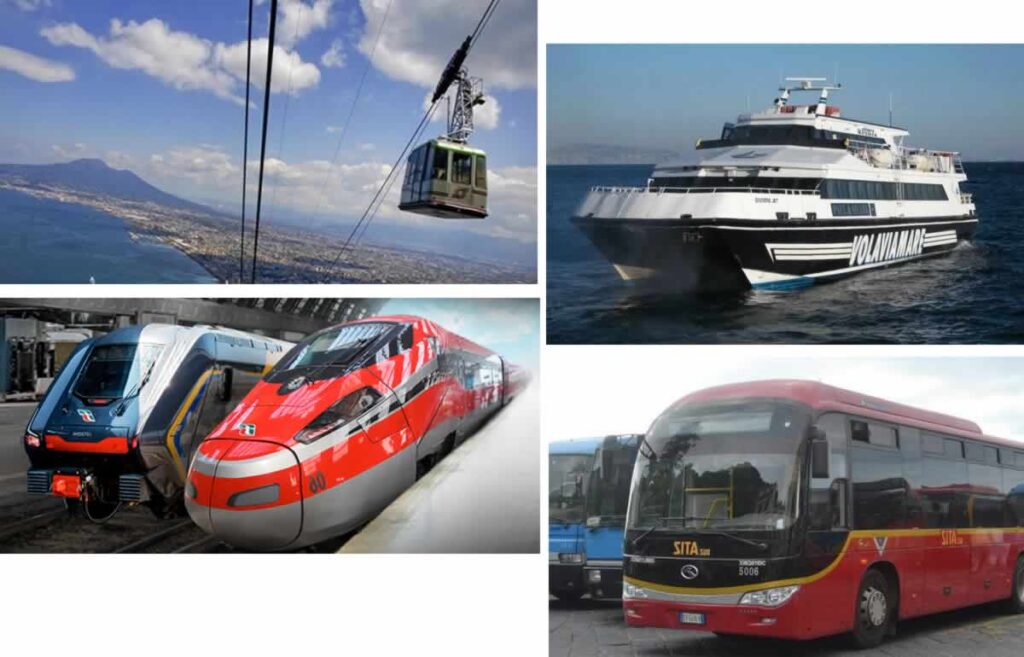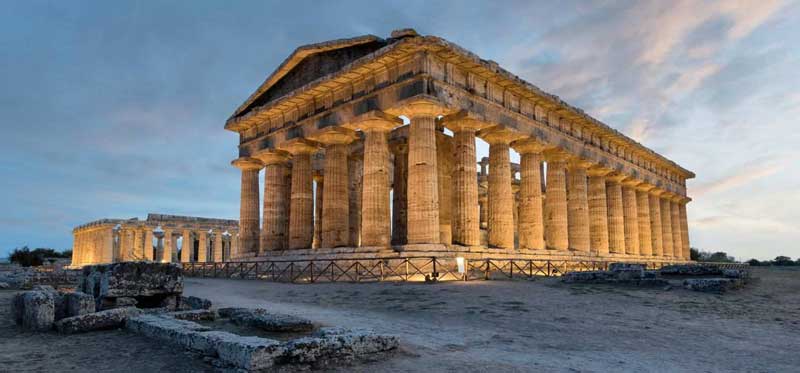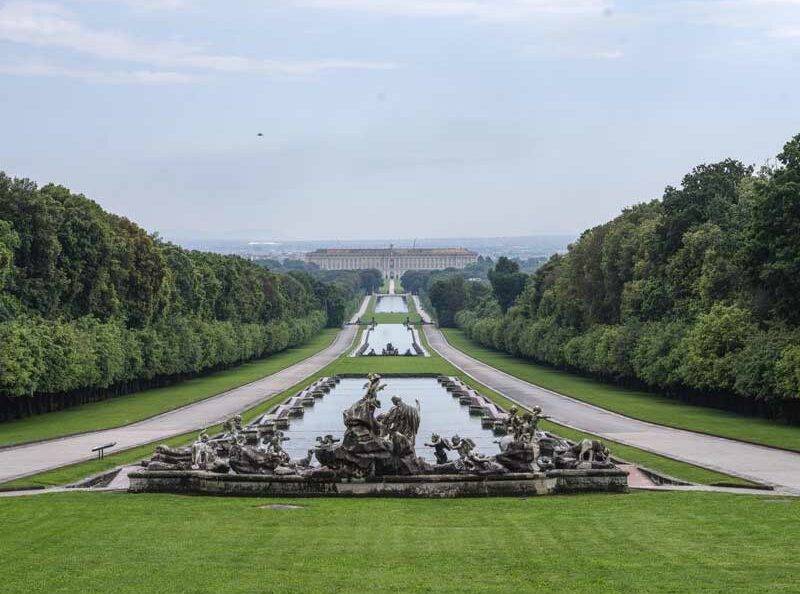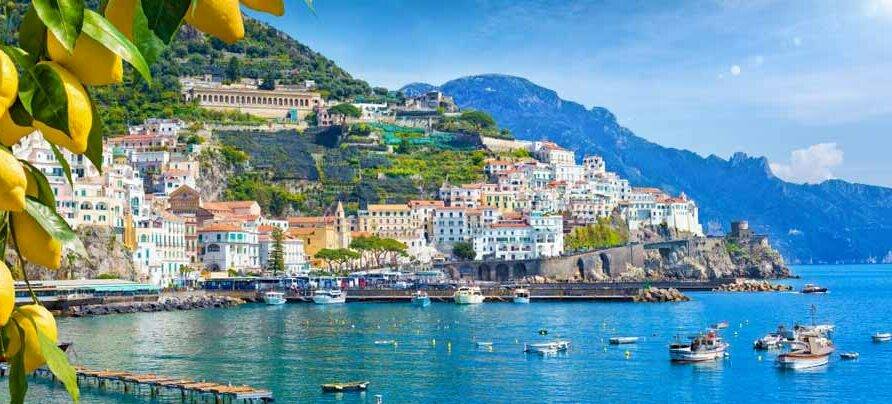A visit to the Herculaneum ruins will surprise you. The archaeological excavations of Herculaneum are about 20 km from our holiday home. They are easily accessible by car or with a convenient train stop only 170 meters away.
Book now! Stabia Holiday House, your holiday home.
On request we offer transport service to visit the archaeological ruins of Herculaneum and a tourist guide authorized by the Campania region.
About 20 km from Castellammare di Stabia stands the city of Herculaneum, located on the slopes of Vesuvius and its Archaeological park, easily reachable from our holiday home also by public transport.
The Roman city of Herculaneum, destroyed and buried by the eruption of Vesuvius in 79 AD, was brought back to the chronicles of history in the eighteenth century thanks to Bourbon explorations.
Provided with modest walls, the inhabited center was built on a volcanic plateau overlooking the sea at the foot of Vesuvius, limited on the eastern and western sides by two streams; two river inlets were natural and safe landing places.
The size of the city was actually quite modest: it was assumed that the total area enclosed by the walls was about 20 hectares, of which about 4.5 hectares are now visible in the open air, for a population of about 4000 inhabitants.
Despite the centuries-old history, therefore, the excavations have brought to light only a part of the ancient city, so that much of the ancient Herculaneum is still buried underground, preserving, among other things, the entire forensic area, the sacred and civil buildings with their precious furnishings and decorative equipment.
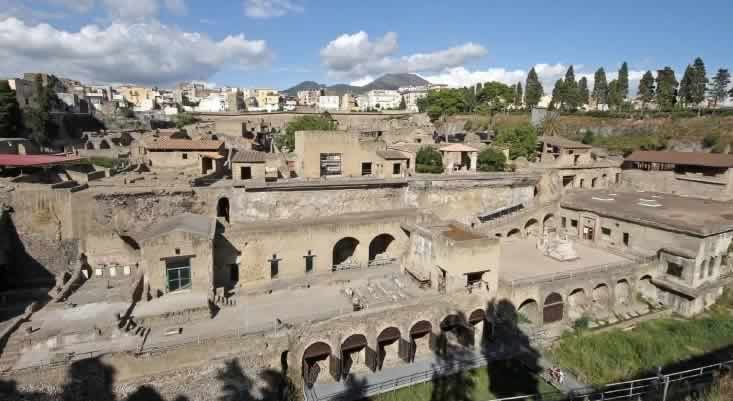
A visit to Herculaneum Ruins
Currently most of the archaeological park that can be visited consists, with the exception of the thermal baths and the gym, of private houses of the imperial age, characterized by a great typological variety: houses with a traditional layout, multi-family houses, large residences that develop part of their neighborhoods in a dominant position overlooking the sea and straddling the walls.
Despite the limits of the extension of the city brought to light, it seems that the urban layout was articulated on at least three decumani (only two excavated in the open air: the lower and the maximum decuman, partially pedestrianized with the arch in front of the West and the ‘access to the temple of the Magna Mater to the East) intersected by five hinges (of which only three in the open air), perpendicular to the decumans and the coast line.
Even the southern limit of the city is sufficiently well known, with its powerful vaulted substructures (arches), the above terraces with suburban spas and large private domus, also spread over several levels. Dionysius of Halicarnassus attributes the mythical foundation of the city to Heracles returning from Iberia, while Strabo reports that the city was first in the hands of the Opici-Osci, then the Etruscans and the Pelasgians and finally the Samnites.
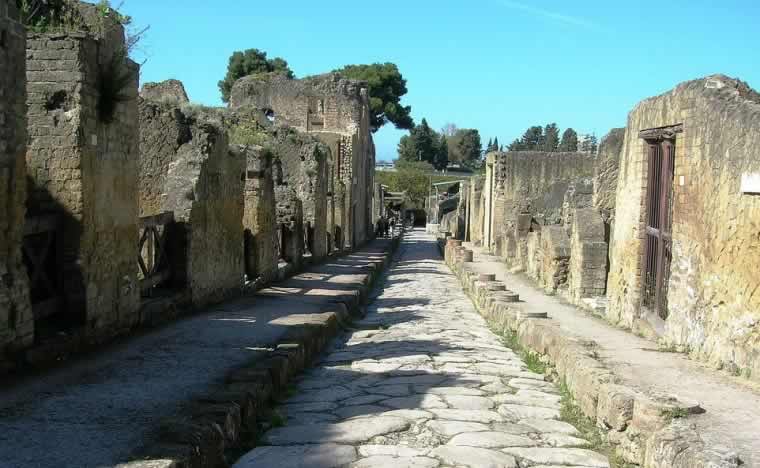
Visit Herculaneum ruins
Like Pompeii and Stabiae, Herculaneum also had to fall within the orbit of the Neapolitan confederation.
Rebelled in Rome during the Social War, she was attacked and conquered in 89 BC. from the legacy of Lucius Cornelius Sulla, Titus Didius. It was therefore affected by the process of municipalization conducted by the Romans that affected all central and southern Italy.
The life of the city was finally abruptly interrupted by the eruption of Vesuvius in 79 AD.
Over time, the memory of the location of the ancient Roman city was lost. Only in 1710 a farmer, Ambrogio Nucerino, digging a well to irrigate his garden, recovered many fragments of precious marble. Only later did they realize they belonged to the theater of the ancient city.
Informed of the discovery, the noble Emanuel-Maurice of Lorraine, prince of Elboeuf, purchased the well. For nine months he conducted excavations for tunnels at his own expense, thanks to which he recovered nine statues with which he paid homage to the powerful of the time. But only in 1738, at the behest of King Charles III of Bourbon, did systematic explorations for tunnels of the ancient site begin.
In 1828, under the reign of Francis I of Bourbon, “open-air” excavations were undertaken for the first time, carried out until 1875. After a very long interruption, the works were resumed in 1927 by Amedeo Maiuri, who led them until 1958 But already in 1942 almost all the area that constitutes the current archaeological park had been brought to light and contextually restored and covered.
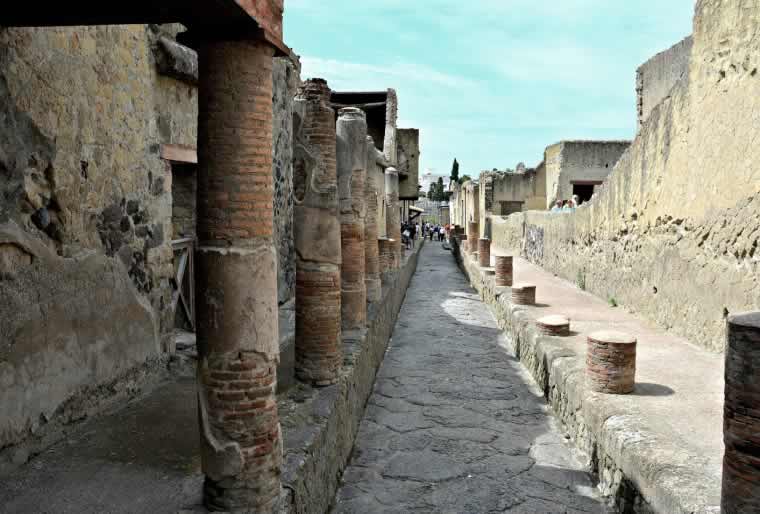
Between 1960 and 1969 further work was carried out in the northern sector of Insula VI and along the maximum decuman,
while in the last twenty years the ancient beach has been explored, coinciding with the southernmost part of the archaeological area. Twelve rooms with arched entrances (archways), shelters for boats and warehouses have been brought to light in this area, where many Herculaneum refugees had sought refuge from the eruption.
In the years 1996-1998 open-air excavations were carried out in the area conventionally called “Scavi Nuovi”, connected to the archaeological park proper by means of a narrow and deep trench which, grafting at the height of Aristide’s house, continues with a gallery below the modern Vico Mare.
In this area, where new excavation, restoration and enhancement works were carried out by the Superintendency in the years 2007-2009 thanks to funding from the European Community, structures belonging to the Villa of the Papyri (atrium district, first lower floor and terrace on the sea), already explored for underground tunnels in the eighteenth century, but also part of a thermal complex of the north-western Insula and a luxurious residential building of the Insula I.
None of these sites could be brought to light in its entirety,
since the structures develop for the most part below land that has not been expropriated. A system of water-pump pumps, in fact, must keep the surface of the outcropping water permanently under control due to the sinking of the ancient coast line following the eruption of 79 AD. and related phenomena.
The reopening of the Decumanus Maximus – the main road of the ancient city of Herculaneum – marks the final step of returning the Roman roads to visitors and concludes an important chapter relating to the works carried out that affected the shops along the North escarpment and some of the most interesting Roman dwellings of the archaeological site, including the Casa del Doppio Portale, now finally accessible in all its splendor with its exceptional entrance, the columned portico and the wooden elements still intact, while important restoration works are underway in the famous Casa of the Bicentennial.
Further extraordinary maintenance works are also underway on the infrastructural systems and conservative restoration of the buildings of the ancient city, as well as archaeological research activities within the interinstitutional Herculaneum Conservation Project, conducted thanks to the co-financing of the Packard Humanities Institute, in collaboration with the British School at Rome and other Italian and foreign universities.
Source: Ministry of Cultural Heritage and Activities
A visit Herculaneum ruins will be a fantastic experience, on request we offer transport service to the excavations and a tourist guide authorized by the Campania region.
Check availability and book our holiday home now to visit Herculaneum archaeological site and other area attractions in comfort.
Archaeological Park of Herculaneum
Corso Resina – 80056 Ercolano (NA)

